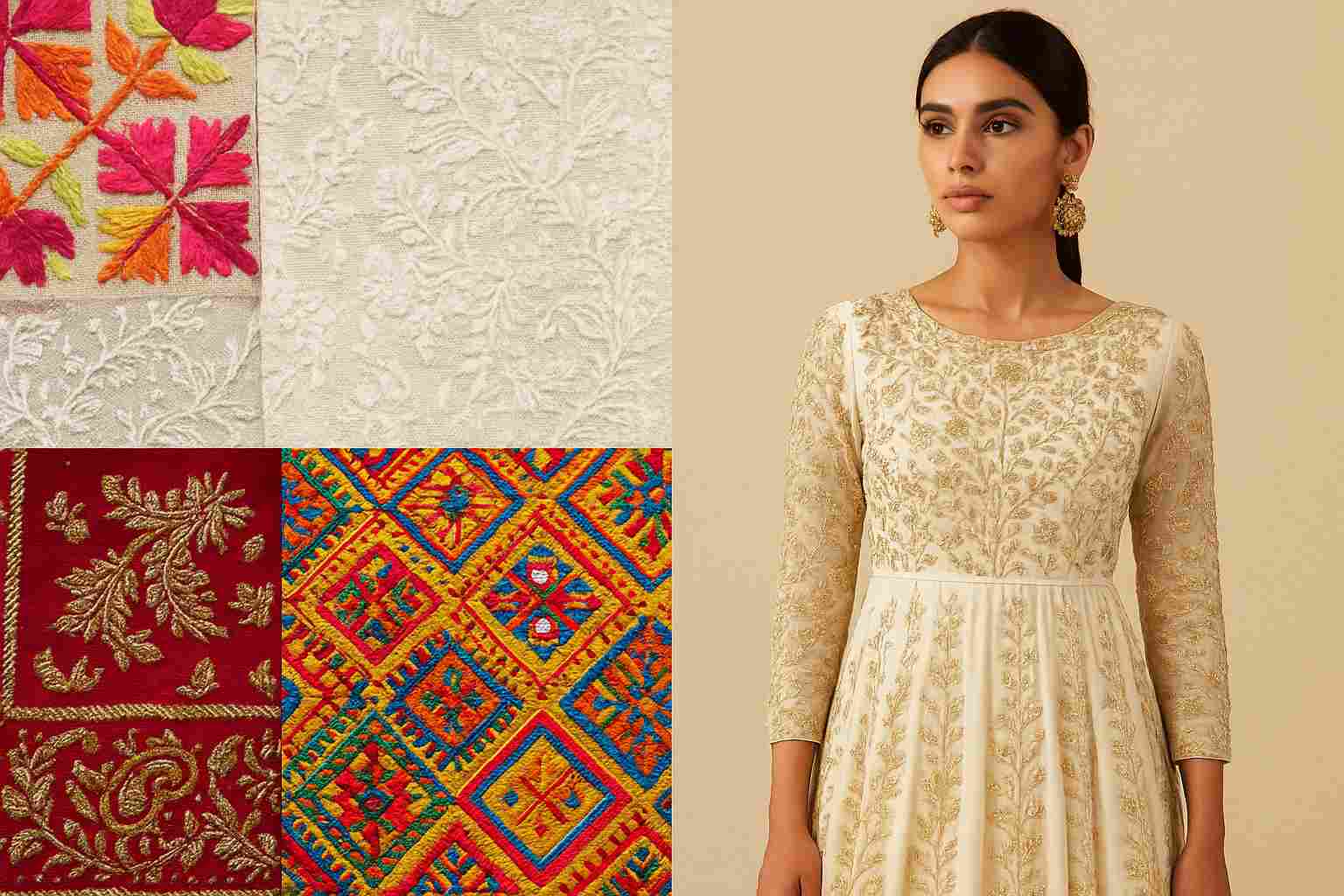Embroidery has always been more than decorative stitching—it is a cultural art form woven into the identity of communities across the world. In India and beyond, traditional embroidery reflects heritage, craftsmanship, and creativity, passed down through generations. Every stitch carries history, every motif conveys meaning, and every fabric becomes a canvas of storytelling.
Thank you for reading this post, don't forget to subscribe!In today’s fashion landscape, embroidery is experiencing a revival. From handwoven textiles to haute couture, traditional embroidery continues to inspire designers, preserve culture, and connect modern fashion with ancient artistry.
1. What Makes Traditional Embroidery Unique?
Unlike machine-made designs, traditional embroidery is hand-crafted with patience, skill, and attention to detail. Each region or community has developed its own techniques, motifs, and patterns influenced by local culture, environment, and traditions.
- Techniques: From delicate chain stitches to bold mirror work.
- Materials: Silk threads, cotton yarns, golden zari, beads, and sequins.
- Motifs: Inspired by nature (flowers, birds, animals), mythology, and daily life.
This individuality makes each piece of embroidery not just clothing, but a cultural artifact.
2. The Rich Legacy of Embroidery Across Regions
India is a treasure trove of traditional embroidery styles, each region known for its distinct character:
- Phulkari (Punjab): Vibrant floral embroidery done with silk threads on coarse fabric, often gifted at weddings and festivals.
- Kantha (West Bengal & Odisha): Simple running stitches forming motifs of flowers, animals, and folk stories.
- Chikankari (Lucknow, Uttar Pradesh): Fine white thread embroidery on muslin or cotton, known for its elegance and subtlety.
- Zardozi (Mughal-inspired, North India): Rich embroidery using metallic threads, beads, and sequins, once reserved for royalty.
- Kutch & Mirror Work (Gujarat, Rajasthan): Geometric patterns with tiny mirrors, symbolizing celebration and vibrancy.
- Kasuti (Karnataka): Intricate geometric embroidery often seen on sarees, inspired by temple architecture and folk art.
Each of these styles represents more than fashion—it is history stitched into fabric.
3. Cultural Significance of Traditional Embroidery
Embroidery has always been closely tied to cultural identity. In many regions, embroidered garments are part of rituals, festivals, and social customs.
- Symbol of status and wealth: Zardozi and Banarasi embroidery were worn by royalty and nobility.
- Expression of love and blessing: Phulkari dupattas are gifted to brides as symbols of good fortune.
- Storytelling medium: Kantha and Kasuti stitches often narrate folklore and local legends.
In this way, embroidery becomes a language—speaking without words, yet preserving stories for generations.
4. The Modern Revival of Embroidery
With globalization and fast fashion, many traditional crafts were once at risk of being forgotten. However, embroidery has made a strong comeback in both Indian and international fashion.
- Fusion wear: Embroidered jackets, skirts, and crop tops blending tradition with modern cuts.
- Sustainable fashion: Designers promoting hand embroidery as eco-friendly, supporting local artisans and slow fashion.
- Luxury couture: Renowned designers like Sabyasachi Mukherjee, Abu Jani-Sandeep Khosla, and Anita Dongre have reintroduced traditional embroidery into high-end bridal and global collections.
- Global appeal: Embroidery is celebrated on international runways and embraced by fashion houses worldwide.
This revival ensures that while embroidery evolves, it never loses its cultural essence.
5. The Future of Traditional Embroidery
The future of embroidery lies in innovation while preserving heritage. Some trends shaping its journey include:
- Digital embroidery meets handwork: Blending technology with traditional stitches.
- Artisan empowerment: E-commerce and global platforms giving local craftsmen international visibility.
- Sustainability: Growing demand for handmade, slow fashion will make embroidery a key trend in conscious fashion.
- Customization: Consumers seeking personalized, hand-embroidered garments as unique fashion statements.
Traditional embroidery will continue to thrive as long as its artistry is respected and adapted to modern lifestyles.
Conclusion
Traditional embroidery is not just an art—it is an identity woven into threads. From the delicate Chikankari of Lucknow to the bold mirror work of Gujarat, every stitch holds centuries of culture and craftsmanship. Today, as the fashion world seeks authenticity, embroidery stands tall as a bridge between heritage and innovation.
In a world driven by mass production, embroidery reminds us of the beauty of slowness, storytelling, and human touch. It is proof that threads can carry not only color but also culture, pride, and timeless beauty.


